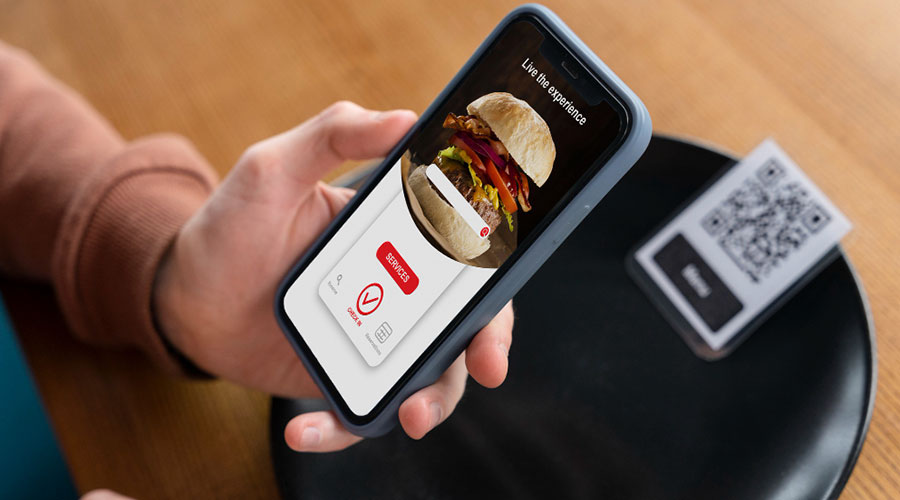The restaurant industry is constantly evolving, and with the advent of new technologies, the customer experience is becoming more personalized and efficient. Artificial intelligence (AI) is playing a significant role in enhancing the customer experience in the restaurant industry. In this blog, we will discuss some specific examples of how AI is being used to improve the customer experience in the restaurant industry.
Personalized Recommendations
AI uses machine learning algorithms to analyze large data sets, such as customer behavior, menu items, and ratings, to provide personalized recommendations for each customer. This can be done through techniques like collaborative filtering, decision trees, and clustering. These models learn from the data, identify patterns, and make recommendations based on each customer’s unique preferences and history. The recommendations can be in the form of menu items, dishes, or even entire meals that best match the customer’s tastes.
AI-powered systems analyze a customer’s past orders and preferences to make personalized recommendations for future meals. For example, a customer who frequently orders vegetarian meals may receive a recommendation for a new vegetarian dish on the menu. This not only improves the customer experience but also increases the chances of upselling.
Automated Ordering
AI provides automated ordering in the restaurant industry using natural language processing (NLP) and machine learning (ML) algorithms. Customers can use voice or text input to place their order, which is then processed and translated into a structured format that can be used by the restaurant’s point-of-sale (POS) system. NLP and ML algorithms are used to interpret the customer’s request, identify the items ordered, and calculate the total cost. This automated process can greatly increase efficiency and reduce errors, leading to improved customer satisfaction. Some AI systems can also predict customer orders based on past behavior, further streamlining the ordering process.
AI-powered systems process customer orders quickly and accurately, reducing wait times and increasing efficiency. For example, a customer can place an order using a mobile app or through a voice-enabled device, such as Amazon Echo or Google Home. The order is then automatically sent to the kitchen, where it is prepared and delivered to the customer. This not only improves the customer experience but also increases the efficiency of the restaurant.
Chatbots
Chatbots provide customers with a conversational interface for ordering food, getting recommendations, and answering questions about menu items and restaurant operations. They use NLP to understand customer requests and provide personalized, automated responses. This can help improve the customer experience by reducing wait times and increasing convenience, while also freeing up staff to focus on other tasks. Chatbots can also be integrated with a restaurant’s POS system and menu database, allowing them to provide real-time information and updates. Additionally, chatbots can collect customer data and use machine learning algorithms to improve their responses over time, leading to more accurate and effective interactions.
For example, a customer can use a chatbot on the restaurant’s website to place an order or make a reservation. The chatbot can also provide information about specials or promotions, increasing the chances of upselling.
Intelligent Inventory Management
Using machine learning algorithms AI analyzes sales data to predict future demand and optimize ordering decisions. This can help ensure that restaurants have the right quantities of ingredients on hand to meet customer demand, while minimizing waste and overstocking. AI systems can also track inventory levels in real-time, alerting managers when supplies are running low and facilitating the ordering of new items. Additionally, AI can integrate with suppliers and distributors to automate the ordering process, streamlining operations and reducing the risk of human error. By using AI for inventory management, restaurants can improve efficiency, reduce costs, and ensure a high level of food quality and customer satisfaction.
Intelligent inventory management systems can save the restaurant a lot of labor and money by automating a complex process. For example, a system can track the inventory levels of ingredients used to make a popular dish, and automatically order more when the inventory level drops below a certain threshold. This not only improves the customer experience but also increases the efficiency of the restaurant.
Predictive Maintenance
AI can perform predictive maintenance in restaurants by analyzing data from various sources, such as equipment performance logs, energy consumption patterns, and maintenance histories. The AI models can identify patterns and anomalies in the data to predict when equipment is likely to fail, allowing maintenance to be scheduled proactively before equipment breakdowns occur. This helps reduce downtime, increase equipment lifespan, and improve overall efficiency in the restaurant industry.
Predictive maintenance systems can monitor the performance of equipment and predict when maintenance is needed. For example, a predictive maintenance system can monitor the performance of a refrigerator and predict when it needs maintenance. This not only improves the customer experience but also helps the restaurant anticipate downtime and plan for it.

In conclusion, AI is playing a significant role in enhancing the customer experience in the restaurant industry. It is changing the landscape of the industry by connecting so many pieces together and freeing up the restaurant staff’s time to do more meaningful work.
Personalized recommendations, automated ordering, chatbots, intelligent inventory management, and predictive maintenance are just a few examples of how AI is being used to improve the customer experience. As technology continues to advance, we can expect to see even more innovative ways that AI is used to enhance the customer experience in the restaurant industry.
Skellam AI has been an industry leader in offering AI-and-ML-powered solutions for large restaurant chains, including a Fortune 500 enterprise. Our recommendation engine is making billions of recommendations every year earning our client hundreds of millions of dollars in revenue. Our NLP solutions provide insights from billions of consumer conversations on app and social media.
Have a question about implementing AI for your business? Write to beawesome@skellam.ai

